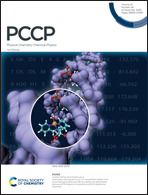In situ Raman and XRD study of CO2 sorption and desorption in air by a Na4SiO4–Na2CO3 hybrid sorbent
Abstract
Silicate–carbonate mixtures as new CO2 capture agents have the latent application potential. CO2 sorption or desorption processes using the Na4SiO4–Na2CO3 mixture sorbent in air were analyzed by in situ Raman spectroscopy and X-ray diffraction from 25 °C to 900 °C. The results show that the Na4SiO4–Na2CO3 mixture sorbent could continuously absorb and strip CO2 by thermal swinging. The CO2 sorption was produced via a two-step process depending on the temperature range. Initially, CO2 dissolved in carbonate to produce pyrocarbonate (C2O52−) ions, which subsequently reacted with SiO44− anion to produce the polymer silicates and CO32− anion. The C2O52− anion on the surface of the silicates promoted CO2 transformation to CO32− anion through the reaction with SiO44− anions. The CO32− anion decomposed the polymer silicates to produce orthosilicates and CO2 gas again at high temperature. By this circulation, CO2 could dissolve in carbonate more easily and be absorbed and stripped continuously by thermal swinging in the mixture sorbent than the pure carbonate. The processes of recovering heat and separating CO2 from flue gas simultaneously without decreasing the temperature is an economical and attractive method for energy conservation. It offers the theoretical basis for developing new heat-storage and CO2-capture technology.



 Please wait while we load your content...
Please wait while we load your content...